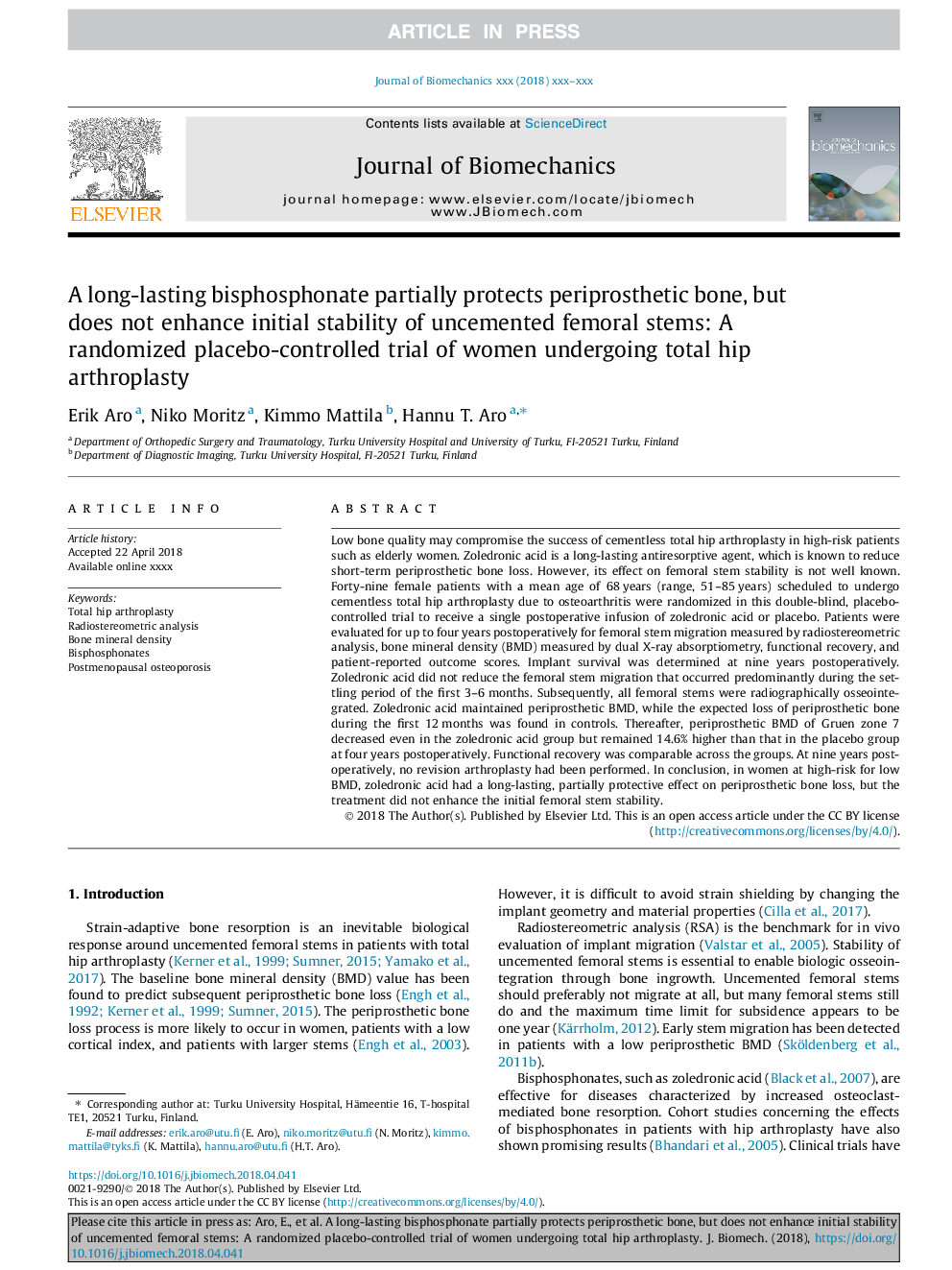| کد مقاله | کد نشریه | سال انتشار | مقاله انگلیسی | نسخه تمام متن |
|---|---|---|---|---|
| 7235862 | 1471089 | 2018 | 11 صفحه PDF | دانلود رایگان |
عنوان انگلیسی مقاله ISI
A long-lasting bisphosphonate partially protects periprosthetic bone, but does not enhance initial stability of uncemented femoral stems: A randomized placebo-controlled trial of women undergoing total hip arthroplasty
ترجمه فارسی عنوان
یک بس فسفونات پایدار طولانی مدت بخشی از استخوان پری پروستات را محافظت می کند، اما پایداری اولیه ساقه های فمورال را افزایش نمی دهد: یک کارآزمایی بالینی کنترل شده به صورت تصادفی در زنان مبتلا به آرتروپلاستی کل
دانلود مقاله + سفارش ترجمه
دانلود مقاله ISI انگلیسی
رایگان برای ایرانیان
کلمات کلیدی
آرتروپلاستی کامل لگن، تجزیه و تحلیل رادیوسکترونیک، تراکم معدنی استخوان، بیسفسفونات ها، پوکی استخوان پس از یائسگی،
موضوعات مرتبط
مهندسی و علوم پایه
سایر رشته های مهندسی
مهندسی پزشکی
چکیده انگلیسی
Low bone quality may compromise the success of cementless total hip arthroplasty in high-risk patients such as elderly women. Zoledronic acid is a long-lasting antiresorptive agent, which is known to reduce short-term periprosthetic bone loss. However, its effect on femoral stem stability is not well known. Forty-nine female patients with a mean age of 68â¯years (range, 51-85â¯years) scheduled to undergo cementless total hip arthroplasty due to osteoarthritis were randomized in this double-blind, placebo-controlled trial to receive a single postoperative infusion of zoledronic acid or placebo. Patients were evaluated for up to four years postoperatively for femoral stem migration measured by radiostereometric analysis, bone mineral density (BMD) measured by dual X-ray absorptiometry, functional recovery, and patient-reported outcome scores. Implant survival was determined at nine years postoperatively. Zoledronic acid did not reduce the femoral stem migration that occurred predominantly during the settling period of the first 3-6â¯months. Subsequently, all femoral stems were radiographically osseointegrated. Zoledronic acid maintained periprosthetic BMD, while the expected loss of periprosthetic bone during the first 12â¯months was found in controls. Thereafter, periprosthetic BMD of Gruen zone 7 decreased even in the zoledronic acid group but remained 14.6% higher than that in the placebo group at four years postoperatively. Functional recovery was comparable across the groups. At nine years postoperatively, no revision arthroplasty had been performed. In conclusion, in women at high-risk for low BMD, zoledronic acid had a long-lasting, partially protective effect on periprosthetic bone loss, but the treatment did not enhance the initial femoral stem stability.
ناشر
Database: Elsevier - ScienceDirect (ساینس دایرکت)
Journal: Journal of Biomechanics - Volume 75, 25 June 2018, Pages 35-45
Journal: Journal of Biomechanics - Volume 75, 25 June 2018, Pages 35-45
نویسندگان
Erik Aro, Niko Moritz, Kimmo Mattila, Hannu T. Aro,
